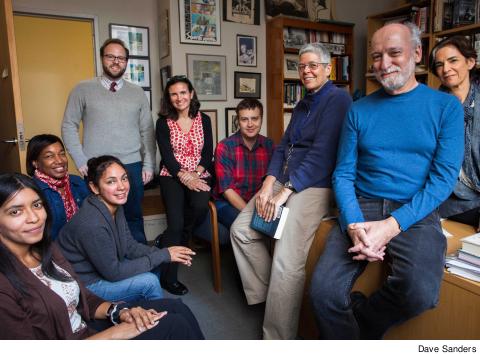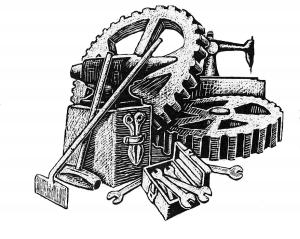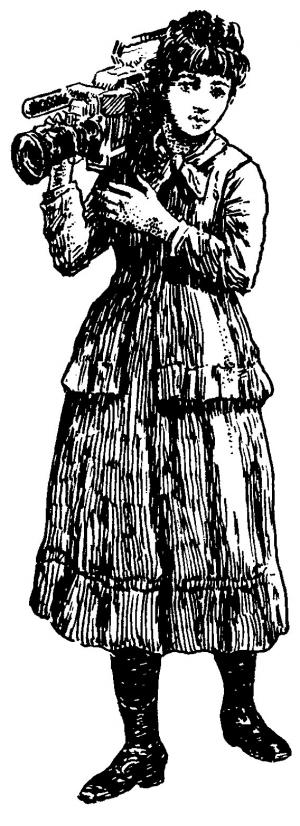 |
It was 35 years ago that the American Social History Project (ASHP) at the Graduate Center set out to popularize a new way to look at American history: rather than focus on presidents and generals, it would tell the nation’s story from the perspective of ordinary Americans who were involved in shaping turning points in history. And it would tell those stories through different types of media – with soundtracks and carousel slide shows, illustrations and primary source documents – and make it accessible to students and working people.
“[We] were challenging the reigning interpretation of American history at the time, which is consensus history, which for all intents and purposes meant disagreements had always been ironed out,” said Joshua Brown, who has been with the project since its beginning and is the current executive director of ASHP, which is now officially called American Social History Project/Center for Media and Learning. “Our vision was much more complicated. We needed to learn from the past, and that includes how [social movements] screwed up in the past.”
A DIFFERENT PERSPECTIVE
This year, the ASHP – a public history project that has earned national acclaim and had a big impact on scholarship at CUNY – celebrates its 35th anniversary. It was founded in 1981 by the late Herbert Gutman, a history professor at the Graduate Center and a pioneer in new labor history, and Stephen Brier, who is currently a professor in urban education at the Graduate Center. Originally named the American Working Class History Project, the concept grew out of summer seminars that Gutman and Brier led on teaching labor history to union members, including steelworkers, retail clerks, teachers and carpenters.
 |
Over the decades, ASHP grew, convening seminars for faculty and high school teachers on how to teach social history and experimenting with all kinds of new media. ASHP used technology that was at the time cutting edge. It created slide-show documentaries on slavery resistance and female mill workers, a CD-ROM with tens of thousands of pages of text, images and sound, an online database of teaching techniques and primary source documents, a 3-D re-creation of P.T. Barnum’s American Museum, and an interactive video game where players assume the role of a young person during important moments in US history. Using all kinds of materials to show the making of history, according to Brown, makes history relatable.
A MULTIMEDIA PROJECT
“It’s very exciting for students to realize that people were complicated in the past and they had similar experiences to their own,” Brown said. “It’s not detached from them. It’s not something that only famous names did, but that, in fact, this was experienced by everyone.”
One of ASHP’s early projects was, Who Built America?: Working People and the Nation’s History, a two-volume social history of the United States that drew on some of the latest academic research in new labor history and also used images, diary entries and journalism of the time to contextualize the historical moment. Joshua Freeman, who is now a distinguished professor in history at the Graduate Center and at Queens College, was one of the historians hired in the mid-1980s to write the book.
 |
“Rather than picking off some little, particularly small area, here I was working on telling the story of the United States in all its complexity. [We were] trying to tell it differently and doing it collaboratively,” said Freeman. “What could be better? It was a very exciting thing.”
What ASHP was doing at the time wasn’t necessarily unique, Freeman said. Many historians were breaking new ground and looking at pieces of American history from the perspective of ordinary people. But, for Freeman, what made the project unusual for its time was its ambitious nature: collecting these different pieces of historical scholarship and synthesizing them, as well as the project’s extensive use of primary source documents for an introductory-level history book.
In 1993, after the book was in circulation for several years, ASHP worked with a leading electronic publisher and released a CD-ROM supplement to Who Built America?, which had tens of thousands of additional documents, from images to original recordings of speeches. For CUNY colleges that have limited library collections, digital access to archival materials had “great meaning,” according to Bill Friedheim, who taught in the department of social sciences at the Borough of Manhattan Community College. Making historical materials more accessible and exploring new ways to teach history, Friedheim reflected, were two major reasons for the project’s success. Friedheim led ASHP workshops for high school teachers and college faculty on teaching with technology at a time when student-centered curriculum was not a prevailing method. Leading those workshops ultimately changed Friedheim’s own approach in the classroom.
 |
CLASSROOM IMPACT
“Like most traditional teachers, I believed that you give lectures and that the teacher is the source of all wisdom,” Friedheim said. “I think a historian has an obligation – even to students who aren’t going to be history majors – to initiate students into the terms of how we construct history and [how] it’s indeed contested turf.”
In its three decades, the program has been recognized nationally for its work, winning awards from numerous bodies including the National Endowment for the Humanities, the American Historical Association and the National Council on Public History.
For Marci Littlefield, an assistant professor in social sciences at BMCC, the ASHP has given her tools to teach her classes with a rich set of materials. In the summer of 2015, Littlefield attended a two-week seminar on “Visualizing the American Civil War.” During the seminar Littlefield examined black women’s agency during the war, by looking at photos, paintings and newspaper illustrations. The interdisciplinary nature of the workshop allowed Littlefield to learn new methods, and as a result, Littlefield said, the workshop “reframed” her research and teaching.
“I use a lot of art to teach. It becomes a visual way for students to connect with the material in a way that just reading about it doesn’t do,” she said.
CONTINUED INNOVATION
For its 35-year anniversary, the ASHP is holding a symposium with leading thinkers and innovators in public history, in which participants and audience members will reflect on the project’s accomplishments and discuss new ways to engage the public. Brown is not sure what form some of their new projects will take. “Part of the discovery is in fact not knowing where we are going,” he said. But the project will continue to stay true to its history: charting new scholarship, telling history in new and innovative ways and training others on how to effectively teach these materials, so that students have a critical understanding of the past, and thus, a better understanding of the present.
“The Past and Future of Public History,” a symposium honoring ASHP’s 35th anniversary will be held on Friday, October 21, from noon to 4 pm in the Elebash Recital Hall at the Graduate Center. For more information, go to the program’s website.

